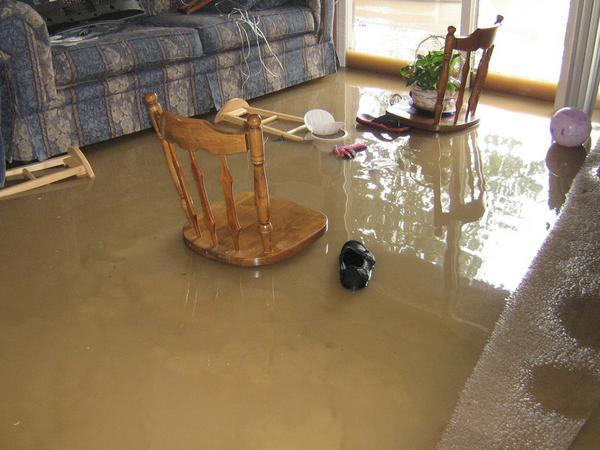What're your thoughts on Common Causes of Water Damage in a Bathroom?

The washroom is incredibly susceptible for wet accumulation as well as possible water damages due to the regular use water in it. This article uses straightforward inspection methods to aid detecting water damage risks.
The constant use water in the bathroom makes it incredibly prone for wet buildup and prospective water damages. By evaluating it consistently, you can reduce water related damages.
The complying with collection of examinations is easy to carry out as well as must be done as soon as in every 3 months in order to maintain your bathroom in good shape as well as to avoid prospective water problems brought on by the bath tub, the shower, pipeline joints and plumbing, sinks, cabinets, and the toilet
Do not overlook carrying out these evaluations as well as be extensive while doing them. Bear in mind that these basic examinations can conserve you a great deal of cash by giving very early indicators for water damages
Sinks as well as Cabinets
Sinks as well as cupboards are subjected to wetness as well as humidity daily and are frequently neglected. Inspect regularly under the sink and on the kitchen counter over it. Fix any type of drip in the catch as it may suggest drain problems. Check out the sink, slow-moving draining pipelines might suggest a blocked drain. Change sink seals if they are fractured or loosened.
Bath tub as well as Shower
The shower as well as bathtub require unique focus as well as maintenance. Check the floor tiles and also change if broken. Make sure that there is no missing cement between the floor tiles. Check as well as replace fractured caulking at joints where the wall surfaces satisfy the floor or the bath tub. Blocked drains and pipelines issues will protect against the bath tub from drying and might suggest major troubles underneath the tub. Consult with a specialist right away to prevent architectural damage. Pay attention to stainings or soft areas around the bathtub wall surfaces as they may show an interior leak.
Plumbing
Signs for water damages are difficult to detect considering that most pipelines are installed inside the wall surfaces.
Pay special focus to floor covering and walls dampness and discolorations as they may show an unnoticeable plumbing problem. Inspect moisture degrees in adjoining spaces as well.
The Bathroom
The toilet is a prone water junction. Inspect the water lines and search for leakages around the bathroom seat, in the tube, as well as under the water container. If you spot any kind of signs of dampness on the floor around the bathroom, check for leaks in the toilet edge and storage tank seals.
Be aware that hanging bathroom dish deodorants boosts the chances for blockages.
Water Damage Signs In The Bathroom To Avoid Cleanup
Musty smell
This is one of the easiest signs to catch because musty smells are so odorous. The damp, earthy, moldy smell should be a big red flag. The smell will develop when moisture gets trapped in surfaces, and begins to facilitate mold growth. Leaking pipes under cabinets, inside walls, and behind shower fixtures will cause moisture to stay trapped and not dry, which will lead to mold growth and spread. As soon as you notice any musty smells in your bathroom, have it checked for hidden water damage and cleanup signs.
Visible mold
If the smell isn’t there to give it away, sometimes you will actually see mold growth. Finding mold in your bathroom is a serious problem, because mold is very harmful to your health. By the time mold growth is visible, it also means that water damage has already occurred and been present for some time. The only way the mold problem can be resolved is to find the source of the moisture and get it stopped. To safely and adequately remove mold, you need to have professionals handle the remediation. Do not waste any time in getting mold problems addressed, fixed, and sanitized so that you can protect you and your family from the many respiratory symptoms caused by mold exposure.
Damaged floors
Bathroom floors should be able to withstand some exposure to water while still remaining in good condition. However, when excess exposure or water leaks occur, they will begin to damage even the most water-resistant flooring. If you notice any cracking, bubbling, staining, or warping on your bathroom floors, there is probably a water leak somewhere causing the distortion. If you notice areas of the floor have become softer, or even have a spongy feeling, there is probably damage to the subfloor. Subflooring is typically made up of plywood. When plywood is exposed to water or moisture, it will absorb it. Once it has become saturated, the weight of the excess water will cause the wood to swell and soften. Check the floors in your bathroom frequently to catch any of these sings before they lead to damaged subflooring.
Changes on walls
When water leaks behind walls, it will cause changes in the drywall. Peeling plaster, blistering paint, and soggy wallpaper are all good indicators that excess water is building up behind the wall. Water leaking behind drywall will cause it to swell and be soft to the tough. If you start to notice gaps along the trim of your walls, or where tile meets the wall, it could also be a strong indicator that there is a leak behind the wall. Any changes, distortion, or damage on the walls should be evaluated as soon as you notice it to prevent further water damage and cleanup.

I ran across that post on How to Fix a Water Damage Bathroom when doing a lookup on the internet. Loved our posting? Please share it. Help someone else discover it. We enjoy reading our article about How to Prevent Bathroom Water Damage.
About